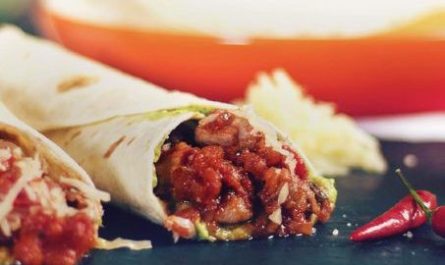You’ve probably heard it before: FOOD WASTE. Yes, it is a problem. Why? Let me give you a small insight. One big question is, what can we do as consumers to avoid the atrocious action of throwing our hard-earned daily bread down the compost bin, or even worse down the trashcan.
What is food waste?
According to the Food and Agriculture Organization (FAO) food loss is the decrease in the quantity or quality of food resulting from decisions and actions by food suppliers in the chain, excluding retailers, food service providers and consumers.
Empirically, it refers to any food that is discarded, incinerated or otherwise disposed of along the food supply chain from harvest/slaughter/catch up to, but excluding, the retail level, and does not re-enter in any other productive utilization, such as feed or seed.
Food loss, as reported by FAO, occurs from post-harvest up to, but not including, the retail level.
Food waste refers to the decrease in the quantity or quality of food resulting from decisions and actions by retailers, food service providers and consumers. Food is wasted in many ways:
Fresh produce that deviates from what is considered optimal, for example in terms of shape, size and color, is often removed from the supply chain during sorting operations.
Foods that are close to, at or beyond the “best-before” date are often discarded by retailers and consumers.
Large quantities of wholesome edible food are often unused or left over and discarded from household kitchens and eating establishments. 1/3 of the food produced around the world is wasted. Around 2.8 million tons of food are thrown away every year in Switzerland equivalent to 330 kg per person (foodwaste.ch).
Less food loss and waste would lead to more efficient land use and better water resource management with positive impacts on climate change and livelihoods.
Reducing food loss and waste is critical to creating a Zero Hunger world and reaching the world’s Sustainable Development Goals (SDGs), especially SDG 2 (End Hunger) and SDG 12 (Ensure sustainable consumption and production patterns).
For many people on the planet, food is a given. But for more than 820 million people who are hungry, food is not a guarantee. (Food and Agriculture Organization of the United Nations (FAO), 2020)
Restaurants, what do they do?
I adventured myself a little bit to learn what restaurant(s) do in order to avoid food waste. So, I walked 3 minutes from my house and went to one of my favorite Mexican restaurants in Zürich. Watch my very short interview below:
A good planning of what you already have and an estimate of what your customers might consume is already a huge start.
Start-ups/Businesses – What do they do?
The organization foodwaste.ch is already a household name in Switzerland when it comes to addressing food waste. Founded in 2012, it’s aim is to inform, clarify and educate the population in Switzerland about this topic. On their website you can find lots of Tipps & tricks, local initiatives, events, and own projects addressing the matter.
Here are some initiatives that in my opinion are doing amazing things fighting food waste:
Ässbar
Their moto is fresh from yesterday. Bread and baked goods should get a second life and not be wasted after a day of being beautifully displayed behind a glass. Ässbar rescues these products and gives them a second life. Every morning baked goods are picked up from bakeries in their respective areas, and sold for a lower price. You will find them in the major cities in Switzerland.
Too Good to Go
The company that was created in Denmark in 2015 connects customers and restaurants or stores through a free mobile app, where customers can purchase unsold food for a lower price. You can find the app in most of the western European (15) countries and the US. For the time being they also launched the “WeCare” initiative helping gastronomy suppliers who might be struggling because of social distancing protocols due to COVID-19.
Madame Frigo
The community fridges are open to the public as an exchange platform for everyone curious. You can place edible food which you no longer require in the refrigerator at any time. And, of course, you can also take goods home for your own needs. This way you support the permanent reduction of food waste in Switzerland. Here is a map where you can find fridges located in your area.
foodsharing
foodsharing is an international initiative started in Berlin in 2012 with branches in Germany, Austria and Switzerland. The community of volunteer food savers “rescues” surplus food in private households and businesses.
On their website you can post so-called food baskets or pick them up from others. In this way, surplus food baskets are not badly stored in private refrigerators, but are recycled. foodsharing operates several Fair-Teiler. These are publicly accessible (refrigerators), where anyone can take excess food to and/or collect food deposited in them.
A network of volunteers collects goods that are no longer for sale from businesses and distributes them further: in their personal network, to people in need in the context of so-called foodsharing tandems, or in the publicly accessible Fair-Dividers. The members of the community work voluntarily and without remuneration. The initiative is and remains free of charge, non-commercial, independent and free of advertising.
Erntenetzwerk – OGG Bern
If producers have fruit and vegetables that they cannot sell, OGG Bern organizes volunteers to help harvest the fields and trees. Harvested fruit and vegetables are donated to charitable organizations or preserved by processing. In this way more fruits and vegetables are used and food receives the appreciation it deserves. In addition, the harvesting network, together with the participating agricultural company, makes a social contribution, as the goods are distributed to people in tight financial circumstances.
Tischlein deck dich
Tischlein deck dich saves food from destruction and distributes it to people affected by poverty throughout Switzerland and the Principality of Liechtenstein. Every week they reach around 20,000 people in need at 132 distribution points. By doing so they make a socially meaningful and ecologically sustainable contribution to the respectful handling of food.
Puretaste
Whether small, ugly, crooked, beautiful, dented, perfect or different; the ingredients of the regional organic farms are fermented at Pure Taste and transformed into delicious products. The company works directly with regional producers and can therefore optimally adapt the creation and production of their ferments to the available raw materials.
Breadbeer
As a beer enthusiast myself, I believe this is a brilliant idea. Unsold bread is crushed into tiny little pieces, these bred crumbs are then brewed with fresh spring water, yeast, hops and barley malt. The result is an amber-coloured and tasty special beer.
Labels – what do they actually tell you?
Expiry dates on food products don’t always are exactly accurate. Some products could be eaten way after its own expiry date. Too Good To Go created a campaign and a label to address this. With “often good after” they encourage consumers to utilize their senses to check if a product is still eatable, and not just throw it away on its expiry date.
Consumers what can we do?
The FAO developed 9 easy tipps which consumers can use to fight food waste:
- Start small – Take smaller portions at home or share large dishes at restaurants.
- Leave nothing behind – Keep your leftovers for another meal or use them in a different dish.
- Buy only what you need – Be smart with your shopping. Make a list of what you need and stick to it. Don’t buy more than you can use.
- Don’t be prejudiced – Buy “ugly” or irregularly shaped fruits and vegetables that are just as good but look a little different.
- Check your fridge – Store food between 1 and 5 degrees Celsius for maximum freshness and shelf-life.
- First in, first out – Try using produce that you had bought previously and, when you stack up your fridge and cupboards, move older products to the front and place newer ones in the back.
- Understand dates – “Use by” indicates a date by which the food is safe to be eaten, while “best before” means the food’s quality is best prior to that date, but it is still safe for consumption after it. Another date mark that you can find on food packages is the “Sell by” date, which is helpful for stock rotation by manufacturers and retailers.
- Compost – Some food waste might be unavoidable, so why not set up a compost bin!
- Donate the surplus – Sharing is caring. (Food and Agriculture Organization of the United Nations (FAO), 2017)
The organization foodwaste.ch has a shorter but thorough list of tipps to avoid food waste, so check it out: 5 Schritte.
So if you are still not convinced why this is an important topic to get involved with please watch this beautiful video:
Food and Agriculture Organization of the United Nations (FAO). (2017). 9 tips for reducing food waste and becoming a #ZeroHunger hero.
Food and Agriculture Organization of the United Nations (FAO). (2020). Food Loss and Food Waste | FAO
foodwaste.ch. (n.d.). 5 Schritte – foodwaste.ch. Tipps-Und-Tricks/5-Schritte.




Loved this article!! I always feel really bad not finishing food at a restaurant, so my strategy has always been to just finish eating (that’s why my summer bod has been out of commission) but I’ve learned to just ask for a to go container and take things home with me for another day!
Yes, you can mostly always ask for your leftovers to be packed for you to take them. I think people are not that used to it here, but restaurants are normally equipped for it, we just have to ask :).
Thanks for sharing your insights and knowledge Ivan! Before I read this article, I did not fully understand why those restaurants with limited amount of dishes don’t produce products or services as much as they can, but not I could understand that it is for not wasting food.
It would be great if it was just because of them fighting against food waste, lets hope for it :).